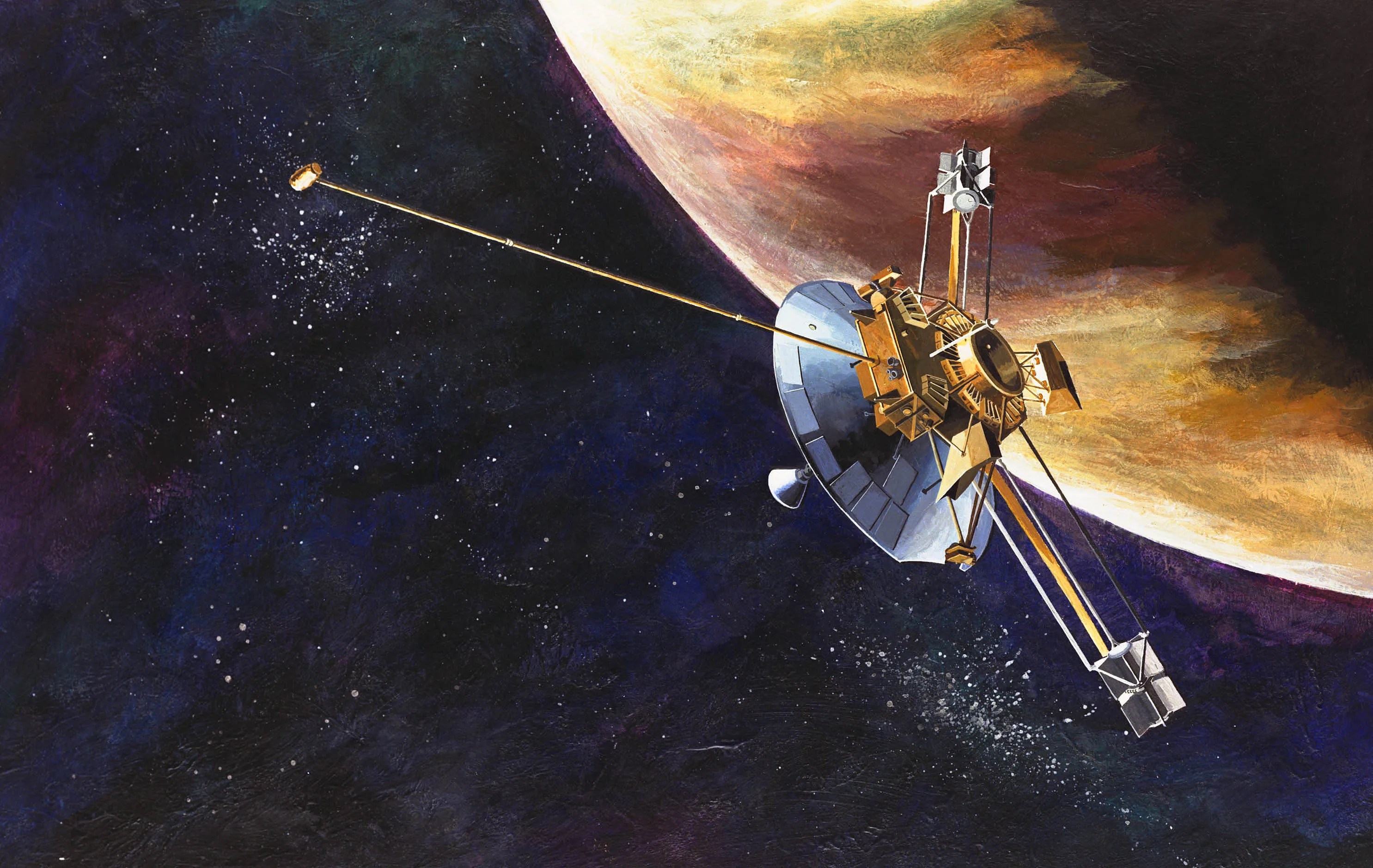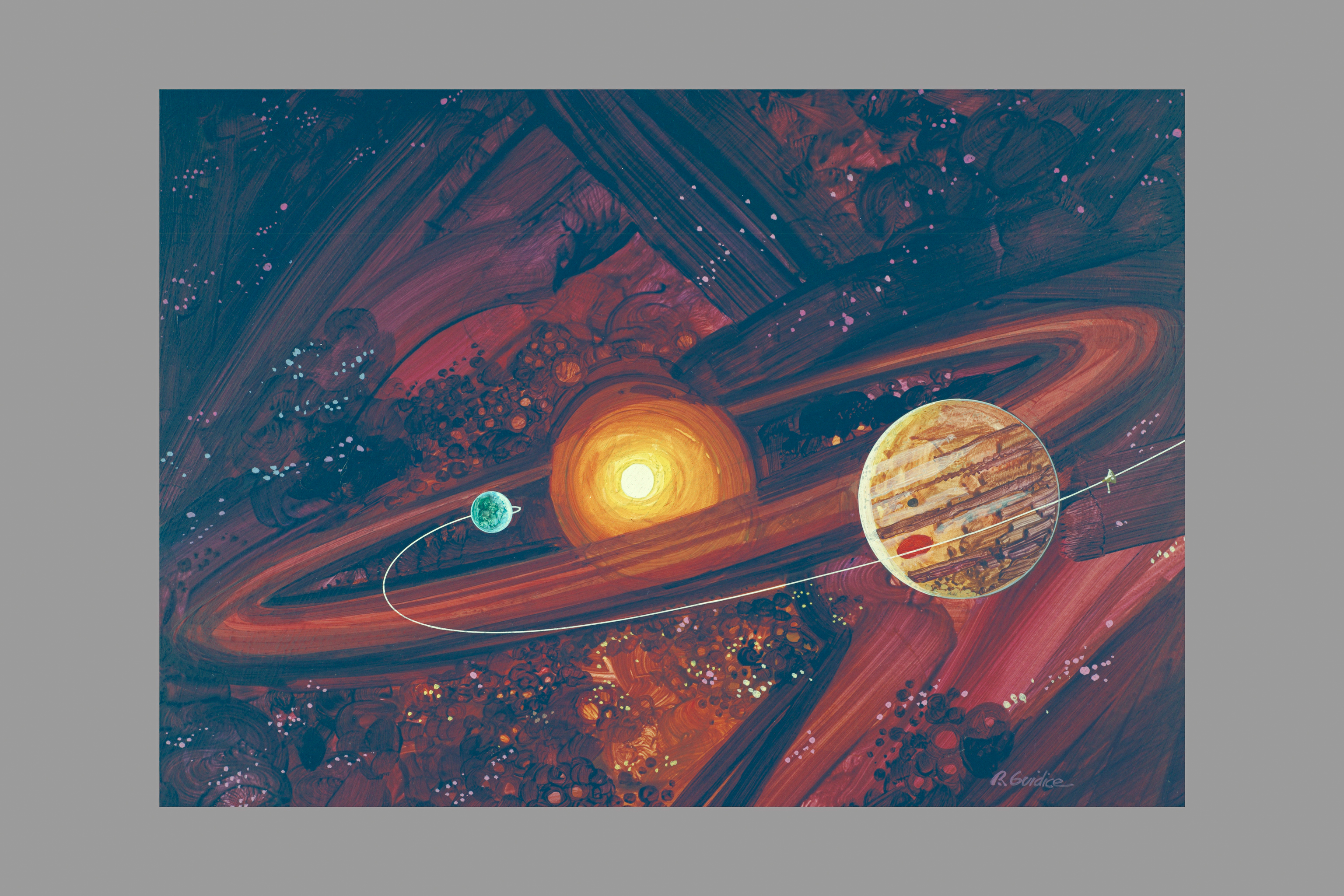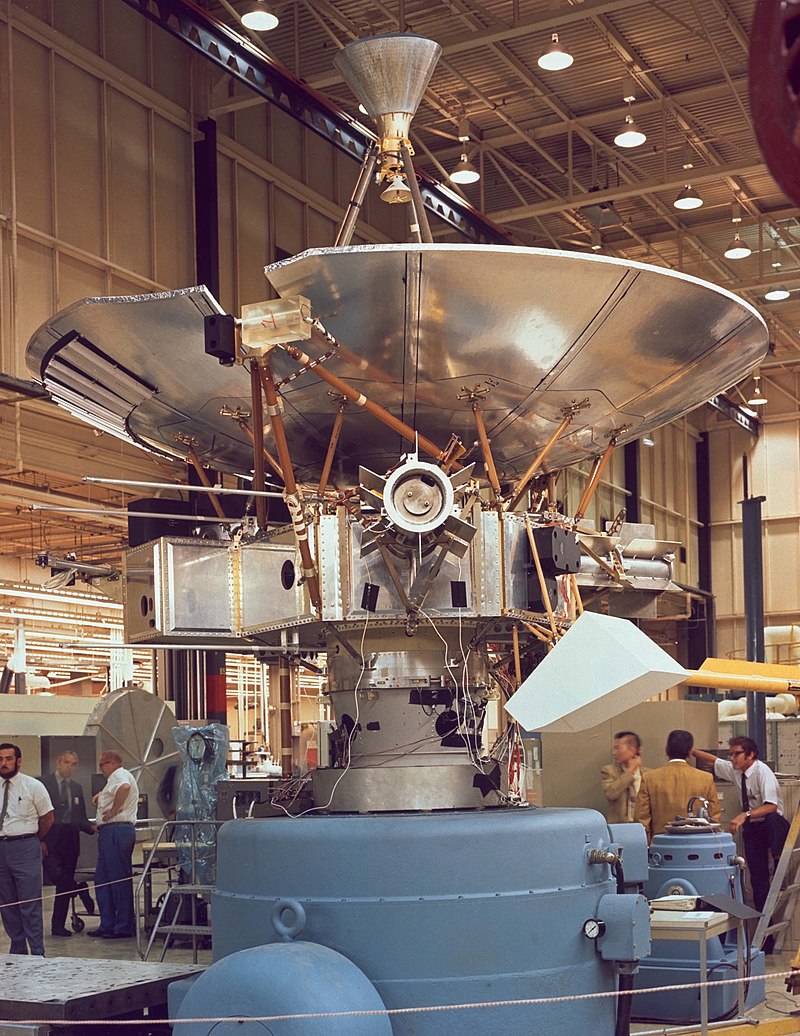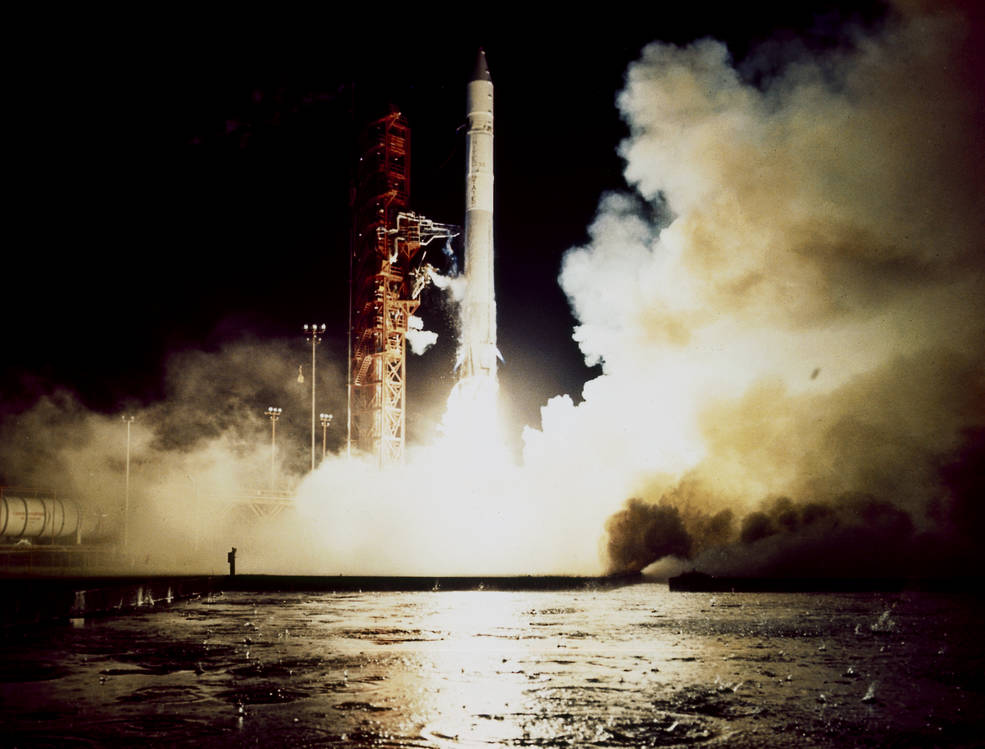Pioneer 10
Type
Launch
Target
Objective
NASA's first mission to the outer planets, Pioneer 10 was designed as a 21-month mission to Jupiter, yet lasted more than 30 years.
What was Pioneer 10?
Pioneer 10 was NASA's first mission to the outer planets. The mission was a spectacular success and the spacecraft notched a series of firsts unmatched by any other robotic spacecraft to date.
- Originally designed for a 21-month mission to fly by Jupiter, Pioneer 10 lasted more than 30 years.
- Pioneer 10 sent its last signal to Earth in January 2003 from a distance of 7.6 billion miles (12.23 billion kilometers).

Nation | United States of America (USA) |
Objective(s) | Jupiter Flyby |
Spacecraft | Pioneer-F |
Spacecraft Mass | 569 pounds (258 kilograms) |
Mission Design and Management | NASA / ARC |
Launch Vehicle | Atlas Centaur (AC-27 / Atlas 3C no. 5007C / Centaur D-1A) |
Launch Date and Time | March 2, 1972 / 01:49:04 UT |
Launch Site | Cape Canaveral, Florida / Launch Complex 36A |
Scientific Instruments |
|
Firsts
- First spacecraft placed on a trajectory to escape the solar system into interstellar space
- First spacecraft to fly beyond Mars
- First spacecraft to fly through the main asteroid belt
- First spacecraft to fly past Jupiter
- Crossed the orbit of Neptune to become the first human-made object to go beyond Neptune
- First spacecraft to use all-nuclear electrical power
Key Dates
March 2, 1972: Launch
July 15, 1972: Spacecraft entered the asteroid belt
Dec. 4, 1973: Pioneer 10’s closest approach to Jupiter
Feb. 1976: Pioneer crossed Saturn’s orbit
June 13, 1983: Pioneer 10 crossed the orbit of Neptune
March 31, 1997: Routine contact with spacecraft terminated
Jan. 23, 2003: Pioneer 10's last signal is received on Earth
In Depth: Pioneer 10
Pioneer 10, the first NASA mission to the outer planets, garnered a series of firsts perhaps unmatched by any other robotic spacecraft in the space era: the first vehicle placed on a trajectory to escape the solar system into interstellar space; the first spacecraft to fly beyond Mars; the first to fly through the asteroid belt; the first to fly past Jupiter; and the first to use all-nuclear electrical power (two SNAP-19 radioisotope thermal generators [RTGs] capable of delivering about 140 W during the Jupiter encounter).
After launch by a three-stage version of the Atlas Centaur (with a TE-M-364-4 solid propellant engine modified from the Surveyor lander), Pioneer 10 reached a maximum escape velocity of 32,110 miles per hour (51,682 kilometers per hour), faster than any previous human-made object at that point in time.
Controllers carried out two course corrections, on March 7 and March 26, the latter to ensure an occultation experiment with Jupiter’s moon Io.
There were some initial problems during the outbound voyage when direct sunlight caused heating problems, but nothing to endanger the mission.
On July 15, 1972, the spacecraft entered the asteroid belt, emerging in February 1973 after a voyage of about 271 million miles (435 million kilometers).
During this period, the spacecraft encountered some asteroid hits, although fewer than expected, and also measured the intensity of Zodiacal light in interplanetary space.

In conjunction with Pioneer 9 (in solar orbit), on Aug. 7, Pioneer 10 recorded details of one of the most violent solar storms in recent record.
At 20:30 UT Nov. 26, the spacecraft reported a decrease in the solar wind and a 100-fold increase in temperature indicating that it was passing through the front of Jupiter’s bow shock. In other words, it had entered Jupiter’s magnetosphere.
By Dec. 1, Pioneer 10 was returning better images of the planet than possible from Earth. (It had already begun imaging as early as Nov. 6, 1973). Command-and-return time was up to 92 minutes by this time.
Pioneer 10’s closest approach to Jupiter was at 02:26 UT Dec. 4, 1973, when the spacecraft raced by the planet at a range of 81,000 miles (130,354 kilometers) at a velocity of approximately 78,000 miles per hour (126,000 kilometers/hour).
Of the spacecraft’s 11 scientific instruments, 6 operated continuously through the encounter.
The spacecraft passed by a series of Jovian moons, obtaining photos of Callisto, Ganymede, and Europa (but not of Io, as the photopolarimeter succumbed to radiation by that time).

Approximately 78 minutes after the closest approach, Pioneer 10 passed behind Jupiter’s limb for a radio occultation experiment. In addition, the infrared radiometer provided further information on the planet’s atmosphere.
Between Nov. 6 and 31 Dec. 31, the spacecraft took about 500 pictures of Jupiter’s atmosphere with the highest resolution of about 200 miles (320 kilometers), clearly showing such landmarks as the Great Red Spot.
The Jupiter encounter was declared over Jan. 2, 1974.
Pioneer 10 fulfilled all objectives except one due to false commands triggered by Jupiter’s intense radiation. Based on the data, scientists identified plasma in Jupiter’s magnetic field.
The spacecraft crossed Saturn’s orbit in February 1976, recording data that indicated that Jupiter’s enormous magnetic tail, almost 800 million kilometers long, covered the whole distance between the two planets.
Still operating nominally, Pioneer 10 crossed the orbit of Neptune (then the outermost planet) on June 13, 1983, thus becoming the first human-made object to go beyond the furthest planet.
NASA maintained routine contact with Pioneer 10 for over two decades until 19:35 UT March 31, 1997, (when the spacecraft was 67 AU from Earth) when routine contact was terminated due to budgetary reasons.
Intermittent contact, however, continued, but only as permitted by the onboard power source, with data collections from the Geiger tube telescope and the charged particle instrument.
Until Feb. 17, 1998, Pioneer 10 was the farthest human-made object in existence (69.4 AU) when it was passed by Voyager 1.
A NASA ground team received a signal on the state of spacecraft systems (still nominal) Aug. 5, 2000. The spacecraft returned its last telemetry data April 27, 2002, and less than a year later, on Jan. 23, 2003, it sent its last signal when it was 7.6 billion miles (12.23 billion kilometers from Earth.
That signal took 11 hours and 20 minutes to reach Earth. By that time, it was clear that the spacecraft’s RTG power source had decayed, thus delivering insufficient power to the radio transmitter.
A final attempt to contact Pioneer 10 on March 4, 2006, failed.
Originally designed for a 21-month mission, the mission’s lifetime far exceeded expectations.
By Nov. 5, 2017, the inert Pioneer 10 spacecraft was roughly 118.824 AUs (about 11 billion miles or 17.7 billion kilometers) from Earth, a range second only to Voyager 1.
The spacecraft is generally heading in the direction of the red star Aldebaran which forms the eye of the Taurus constellation. It is expected to pass by Aldebaran in about two million years.
Pioneer 10 is heading out of the solar system in a direction very different from the two Voyager probes and Pioneer 11, i.e., towards the nose of the heliosphere in an upstream direction relative to the inflowing interstellar gas.
In case its intercepted by intelligent life, Pioneer 10 carries an aluminum plaque with diagrams of a man and a woman, the solar system, and its location relative to 14 pulsars. The expectation is that intelligent beings would be able to interpret the diagram to determine the position of the Sun— and thus, Earth— at the time of launch relative to the pulsars.
Key Source
Siddiqi, Asif A. Beyond Earth: A Chronicle of Deep Space Exploration, 1958-2016. NASA History Program Office, 2018.








